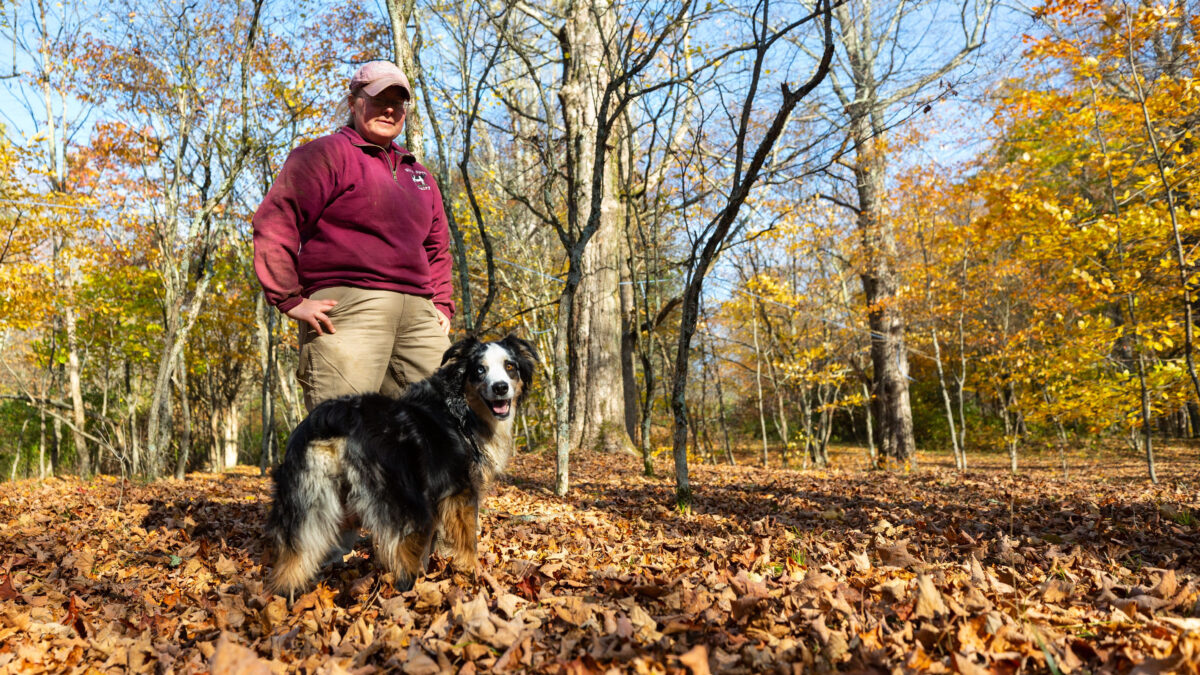To Rake or Not to Rake (Fall Leaves), That is the Question
Guest Author
Special Contributor to FB.org

Guest Author
Special Contributor to FB.org
By Lee Beers
Many areas of the country are experiencing a very beautiful fall this year, with the trees providing plenty of color.
With all those leaves now making their way to the ground, you may be asking yourself if you should rake or not. Everyone seems to have an opinion on what to do with the leaves, but in typical Extension fashion, my answer is “it depends.” It depends on your goals, your capabilities, your tools and your level of hatred (or love) of leaves.
If your goal is to have a clean-looking lawn going into the winter, then I’m sure you favor raking. Removing all the leaves from your yard does have advantages other than providing a cleaner-looking lawn.
Non-mulched leaves tend to mat down grass in low-lying areas. Next spring, these leaf mats may inhibit grass growth and result in muddy spots. Muddy spots then will need to be reseeded to prevent weed patches from popping up. If you are in a wet area, removing the leaves may aid in drying out the soil once spring rolls around, thus allowing you to mow sooner and avoid your mower or shoes getting stuck in the mud.
Whatever method you choose, understand there is no right way or wrong way to handle leaves each fall.
On the flip side, if your goal is to put as many nutrients as possible back into your yard, raking is likely not on your calendar each fall. Trees pull nutrients from the soil each spring as they produce new leaves. When the leaves drop back to the ground and decompose, many of those nutrients are returned to the soil. If we think about leaves like fertilizer, they have a nutrient analysis of about 20-2-8 (nitrogen-phosphorous-potassium). That is a lot of nutrients that can be returned to the soil, so removing the leaves entirely removes this free source of fertilizer.
As leaves break down, they join other organic matter, which includes any plant or animal material that is breaking down in your soil. In lawns, this will include grass clippings, leaves, dead worms and invertebrates, and other organic sources. Organic matter is Mother Nature’s original slow-release fertilizer. Increased amounts of organic matter in your soil will also aid the drainage characteristics of soil. Even though matted leaves may delay the drying, composting your leaves and returning it to your soil may help dry it out in the long run.
For those of you who are pro raking, you know it can be a labor-intensive chore. There are tools available that can help make the process a little bit easier. Leaf blowers, mower baggers, lawn sweepers and lawn vacuums are just a few tools that can take some of the strain off your shoulders. Some of these items can be rather large and bulky, so consider your storage capabilities when choosing a tool. Many landscapers also offer leaf services, which may be a more economical choice if you don’t have the time or storage space to undertake the task yourself.
Getting the leaves into a pile is only half the chore. You still need to figure out what to do with the leaves. Some communities offer curbside pickup, but if you are in a township you will have to find alternative ways to discard your leaves. A key warning: do not burn the leaves unless you are prepared to have a conversation with a firefighter. There are better and easier methods to dispose of the leaves that won’t smoke out your neighborhood, and that don’t pose a fire hazard.
Composting is a great compromise between raking and letting the leaves lie where they fall. You can have a clean looking yard, but also maintain the nutrients that can be spread back onto your yard once the composting process is complete. Leaves compost rather easily, so just pile them up and turn them once this fall, and a couple more times in the spring and they will likely be ready to spread on your yard. Leaves can easily be transported around your yard with the use of a tarp. Simply lay the tarp out near your leaf mess, rake or blow the leaves onto the tarp, and then drag the tarp to your compost site of choice. You can even make dumping them simple by taking one side of the tarp and walking it over the entire tarp, thus leaving all the leaves in a single pile.
Whatever method you choose, understand there is no right way or wrong way to handle leaves each fall. Don’t judge others for how they handle their leaves (unless they are burning them — maybe judge those folks a little).
Lee Beers is an agricultural and national resources educator for OSU Extension – Trumbull County. This column was originally published by Ohio Farm Bureau and is republished with permission.